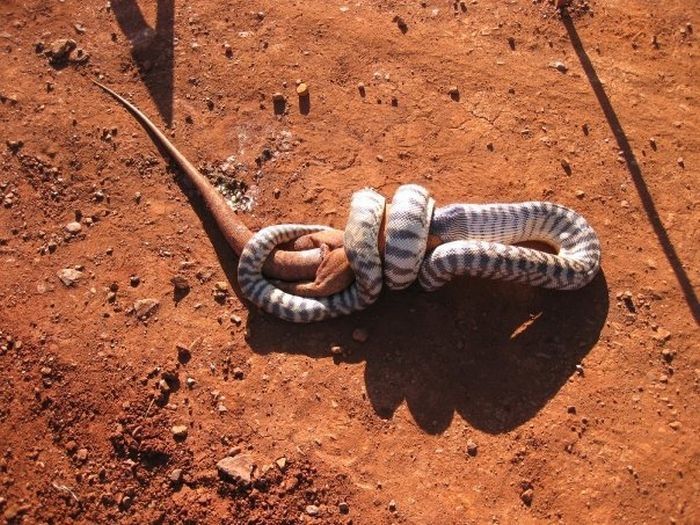|
|
Snake Eats A Lizard
|
The issue of the origin of snakes remains unresolved, since two main hypothesis are competing.
• There is fossil evidence which suggests that snakes may have evolved from burrowing lizards, such as the varanids or a similar group during the Cretaceous Period. An early fossil snake, Najash rionegrina, was a two-legged burrowing animal with a sacrum, and was fully terrestrial. One extant analog of these putative ancestors is the earless monitor Lanthanotus of Borneo, although it also is semiaquatic. Subterranean forms evolved bodies that were streamlined for burrowing and lost their limbs. According to this hypothesis, features such as the transparent, fused eyelids (brille) and loss of external ears evolved to cope with fossorial difficulies, such as scratched corneas and dirt in the ears. Some primitive snakes are known to have possessed hindlimbs, but their pelvic bones lacked a direct connection to the vertebrae. These include fossil species like Haasiophis, Pachyrhachis and Eupodophis, which are slightly older than Najash.
• An alternative hypothesis, based on morphology, suggests the ancestors of snakes were related to mosasaurs — extinct aquatic reptiles from the Cretaceous—which in turn are thought to have derived from varanid lizards. Under this hypothesis, the fused, transparent eyelids of snakes are thought to have evolved to combat marine conditions (corneal water-loss through osmosis), while the external ears were lost through disuse in an aquatic environment, ultimately leading to an animal similar in appearance to sea snakes of today. In the Late Cretaceous, snakes recolonized land to appear as they are today. Fossil snake remains are known from early Late Cretaceous marine sediments, which is consistent with this hypothesis, particularly as they are older than the terrestrial Najash rionegrina. Similar skull structure, reduced/absent limbs, and other anatomical features found in both mosasaurs and snakes lead to a positive cladistical correlation, although some of these features are shared with varanids. In recent years, genetic studies have indicated snakes are not as closely related to monitor lizards as it was once believed, and therefore not to mosasaurs, the proposed ancestor in the aquatic scenario of their evolution. However, there is more evidence linking mosasaurs to snakes than to varanids. Fragmentary remains that have been found from the Jurassic and Early Cretaceous indicate deeper fossil records for these groups, which may eventually refute either hypothesis.
|
|









